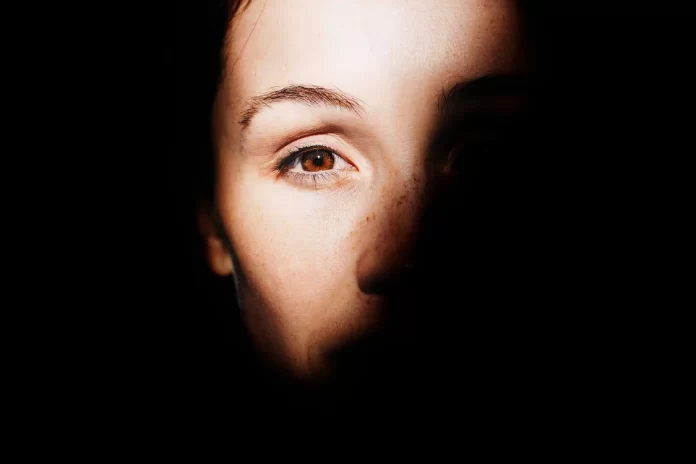People use contact lenses for various reasons, including convenience, comfort, and aesthetics. – Vision Correction
Contact lenses include improved vision quality and flexibility in activities and lifestyle options. In addition, some people wear contact lenses because they are less cumbersome and more aesthetically pleasing than eyeglasses.
Additionally, contact lenses can be worn during activities such as swimming or sports, whereas eyeglasses can easily fall off or get damaged.
Finally, contact lenses can allow people to avoid the social stigma associated with wearing glasses.
Overall, there are many advantages to using contact lenses over eyeglasses for vision correction. Contact lenses are a very effective way to treat a wide range of eye conditions that affect people’s vision and interfere with their daily life.
If you want to check available options online, check for more information.
Table of Contents
Common Eye Conditions
There are common eye conditions that can be treated by wearing contact lenses. Let’s check each one below.
- Myopia (nearsightedness)
One common condition for frequently prescribed contact lenses is myopia or nearsightedness.
Myopia happens when light entering the eye focuses in front of the retina rather than directly on it. This makes close objects appear clear while faraway objects look blurred.
Many children are diagnosed with myopia during childhood and adolescence due to several factors such as:
- genetics
- excessive reading
- Excessive computer use
- Poor lighting conditions at school
- Simply spending more time indoors instead of outdoors, where our eyes are exposed to sunlight, helps focus images correctly on the retina.
Several different contact lenses are available for treating nearsightedness, including soft contact lenses and rigid gas permeable (RGP) contacts.
-
Hyperopia (farsightedness)- Vision Correction
It’s the opposite of myopia or nearsightedness. If you’re hyperopic, you might be able to see things far away just fine, but things up close will be a blur.
Hyperopia is relatively common, affecting around 5% of the population. It’s often genetic, so you’re more likely to have it if someone in your family has it.
There are two main types of hyperopia: simple and compound. Simple hyperopia is when the eyeball is just slightly longer than average. In contrast, compound hyperopia occurs when the cornea (the eye’s clear front surface) is somewhat fatter than usual.
In either case, you may need corrective lenses to help your eyes focus properly on close objects.
Hyperopia can also develop later in life into presbyopia when the lenses in your eyes become less flexible, making it challenging to focus on close items.
-
Presbyopia
Presbyopia is an eye disorder that makes it difficult to see objects close up. It is often caused by the natural ageing process, in which the lens of your eye becomes less flexible over time.
The loss of flexibility causes difficulty focusing on nearby objects or reading and writing tasks. While presbyopia affects everyone as they grow older, you can correct it with glasses, contact lenses, or surgery.
Symptoms of presbyopia typically appear between the ages of 40 and 50 years old and include the following:
- Blurred vision, especially when reading or looking at objects up close
- Eye fatigue or headaches after reading or doing other close work
- The need to put reading materials further away from your eyes to see them clearly
- Difficulty seeing objects in low light or dim conditions
-
Astigmatism
Astigmatism is a common vision problem when the eye’s cornea (the clear, round dome at the front of the eye) or lens (the clear part of the eye that helps focus light) isn’t shaped correctly.
This irregular curvature prevents light from focusing directly on the retina — the thin tissue lining in your eye responsible for sensing light and sending images to your brain.
Astigmatism also causes blurred vision at any distance. In addition, if you have astigmatism, your eyes may tire quickly from squinting or extended reading and computer use. You may also experience headaches and eyestrain.
-
Keratoconus
This is a progressive eye condition where the round, dome-shaped cornea becomes thin and cone-like. This can cause distorted vision. Keratoconus typically first appears in teens or young adults.
There’s no known cure for keratoconus, but treatments can help to improve your vision. In some cases, people may need a cornea transplant.
If you have keratoconus, it’s essential to see your eye doctor regularly to monitor and treat your condition if necessary. However, you can usually maintain good vision despite this condition with proper care.
Conclusion
The list provided above is not meant for you to self-diagnose. But, if you are experiencing any of the symptoms listed, you may want to check with an eye care professional immediately.
On the other hand, if you have already been diagnosed with an eye condition and are looking for a safe and effective treatment option, talk to your doctor about whether contact lenses may be suitable.










